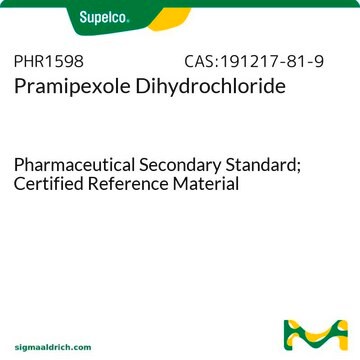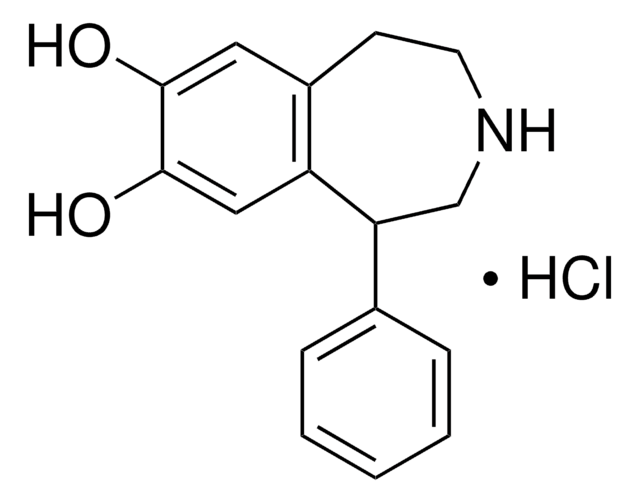A1237
Pramipexole dihydrochloride
>98% (HPLC), powder
Sinónimos:
(S)-2-amino-4,5,6,7-tetrahydro-6-(propylamino)benzothiazole dihydrochloride, PPX dihydrochloride
About This Item
Productos recomendados
assay
>98% (HPLC)
form
powder
storage condition
desiccated
color
white to off-white
solubility
H2O: >20 mg/mL
originator
Boehringer Ingelheim
storage temp.
2-8°C
SMILES string
Cl.Cl.CCCN[C@H]1CCc2nc(N)sc2C1
InChI
1S/C10H17N3S.2ClH/c1-2-5-12-7-3-4-8-9(6-7)14-10(11)13-8;;/h7,12H,2-6H2,1H3,(H2,11,13);2*1H/t7-;;/m0../s1
InChI key
QMNWXHSYPXQFSK-KLXURFKVSA-N
Gene Information
human ... DRD2(1813) , DRD3(1814) , DRD4(1815)
General description
Application
Biochem/physiol Actions
Features and Benefits
signalword
Warning
hcodes
Hazard Classifications
Acute Tox. 4 Oral - STOT SE 3
target_organs
Central nervous system
Storage Class
11 - Combustible Solids
wgk_germany
WGK 2
flash_point_f
Not applicable
flash_point_c
Not applicable
Certificados de análisis (COA)
Busque Certificados de análisis (COA) introduciendo el número de lote del producto. Los números de lote se encuentran en la etiqueta del producto después de las palabras «Lot» o «Batch»
¿Ya tiene este producto?
Encuentre la documentación para los productos que ha comprado recientemente en la Biblioteca de documentos.
Los clientes también vieron
Artículos
We offer many products related to dopamine receptors for your research needs.
We offer many products related to dopamine receptors for your research needs.
We offer many products related to dopamine receptors for your research needs.
We offer many products related to dopamine receptors for your research needs.
Nuestro equipo de científicos tiene experiencia en todas las áreas de investigación: Ciencias de la vida, Ciencia de los materiales, Síntesis química, Cromatografía, Analítica y muchas otras.
Póngase en contacto con el Servicio técnico

















